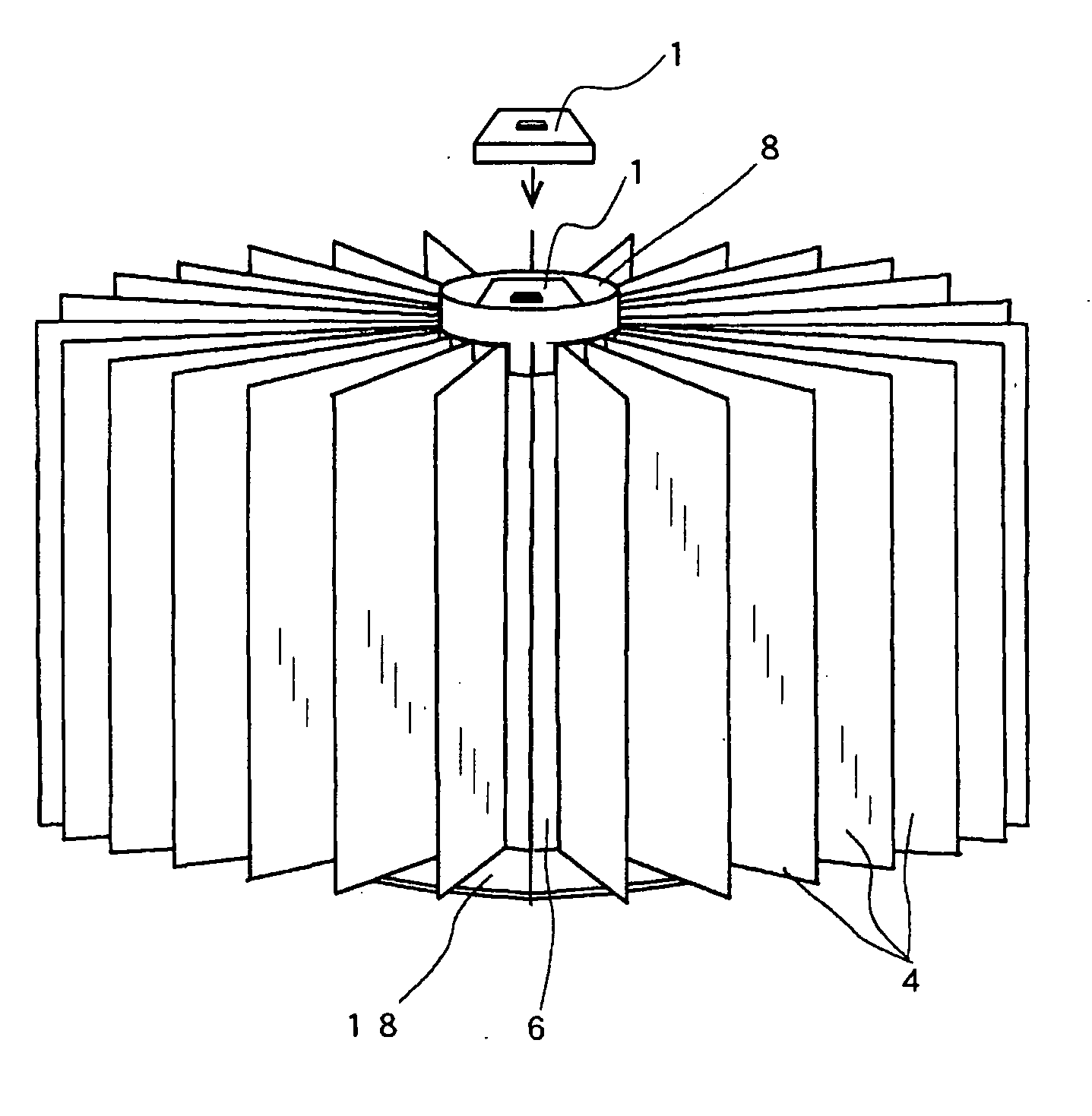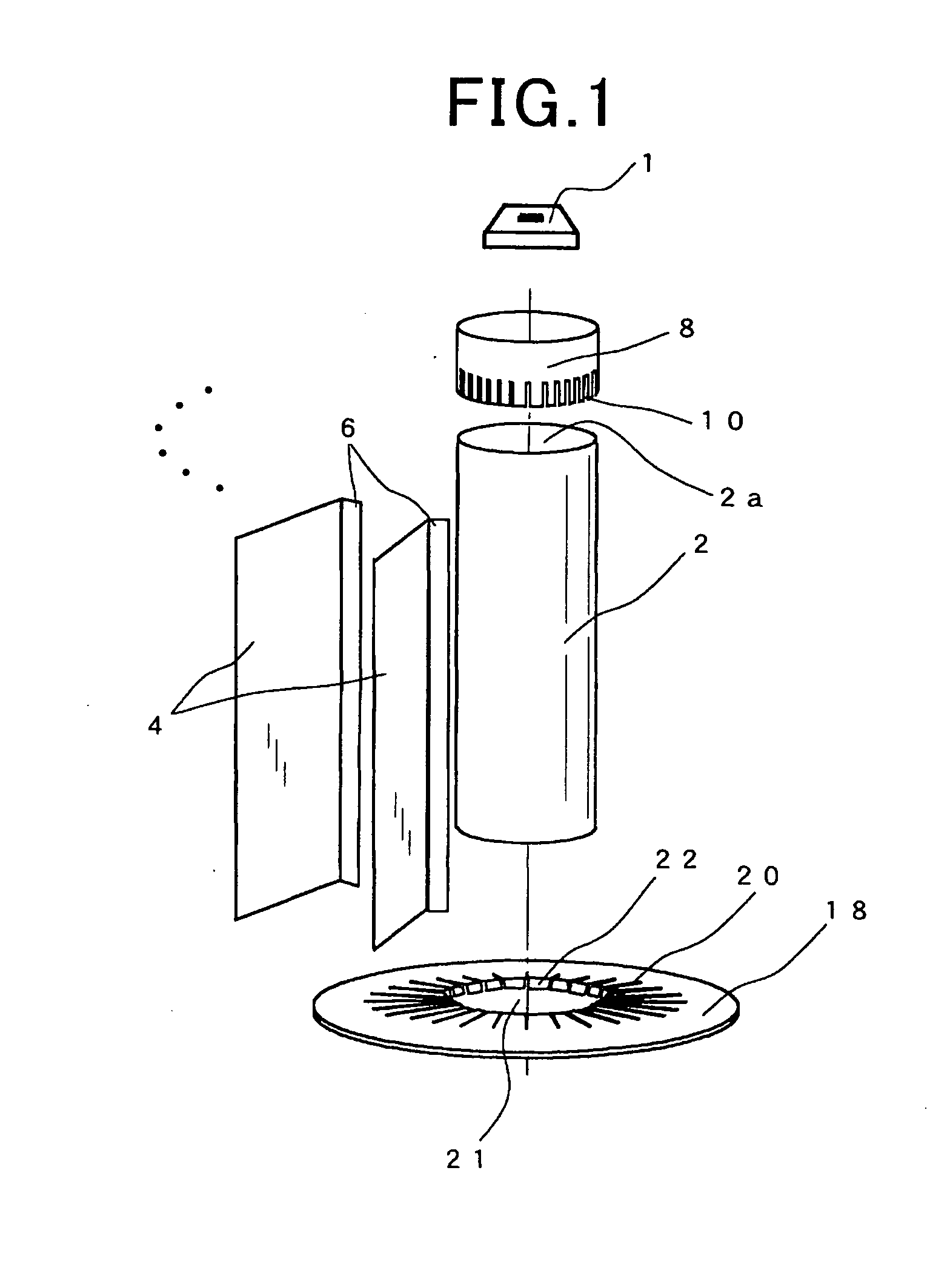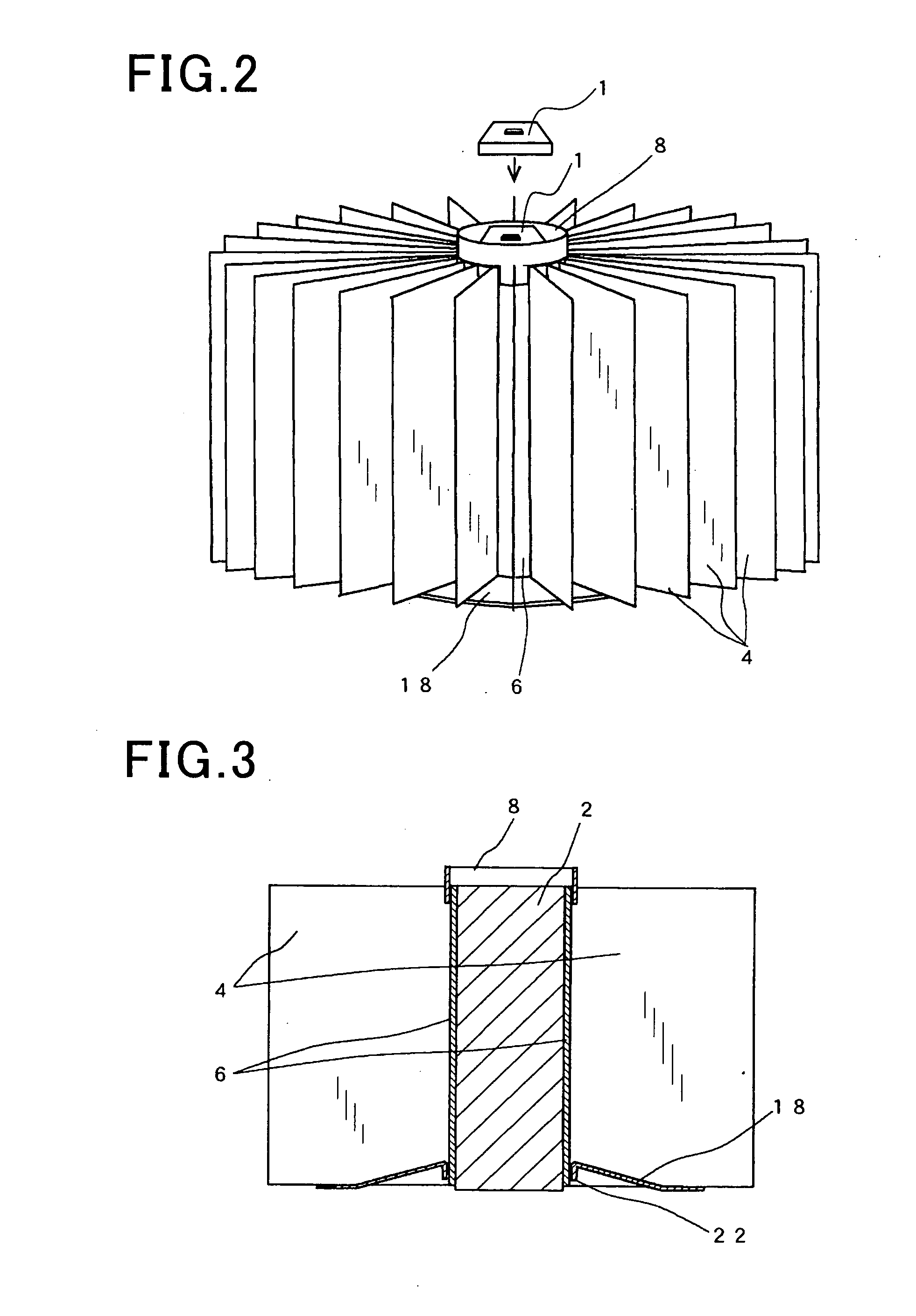Heat sink
- Summary
- Abstract
- Description
- Claims
- Application Information
AI Technical Summary
Benefits of technology
Problems solved by technology
Method used
Image
Examples
first embodiment
[0051]FIGS. 1-4 show the configuration of a heat sink according to a first embodiment of the invention. The heat sink is designed to dissipate heat generated by a device 1 which may be, for example, an LED (Light Emitting Diode) used in a headlamp for a vehicle.
[0052]As shown in FIGS. 1-4, the heat sink includes a pillar member 2 and a plurality of heat-dissipating fins 4.
[0053]In the present embodiment, the pillar member 2 has a cylindrical shape and is made of, for example, aluminum. The pillar member 2 has an upper end face 2a on which the device 1 is mounted.
[0054]In addition, it should be noted that the pillar member 2 may also have other shapes, for example a tubular shape.
[0055]The heat-dissipating fins 4 are provided on the radially outer periphery of the pillar member 2. The heat-dissipating fins 4 are plate-shaped and made of, for example, aluminum. In the present embodiment, the length of the heat dissipating fins 4 in the vertical direction is substantially equal to that...
second embodiment
[0087]FIGS. 11 and 12 show the configuration of a heat sink according to a second embodiment of the invention. The head sink according to the present embodiment is similar to that according to the first embodiment; therefore, only the differences therebetween will be described hereinafter.
[0088]In the present embodiment, the heat sink includes a plurality of heat-dissipating fins 24 instead of the heat-dissipating fins 4 in the first embodiment, and a washer member 30 and a bolt 32 instead of the holding member 18 in the first embodiment.
[0089]More specifically, in the present embodiment, each of the heat-dissipating fins 24 has a first detachment prevention portion 26 and a second detachment prevention portion 28. The first detachment prevention portion 26 is identical to the detachment prevention portions 6 of the heat-dissipating fins 4 in the first embodiment. The second detachment prevention portion 28 extends radially inward from the lower end of the first detachment preventio...
third embodiment
[0094]FIGS. 15-17 show the configuration of a heat sink according to a third embodiment of the invention. The head sink according to the present embodiment is similar to that according to the first embodiment; therefore, only the differences therebetween will be described hereinafter.
[0095]In the present embodiment, the heat sink includes a plurality of heat-dissipating fins 34 instead of the heat-dissipating fins 4 in the first embodiment.
[0096]More specifically, in the present embodiment, each of the heat-dissipating fins 34 has a detachment prevention portion 36 and a slit 38. The detachment prevention portion 36 is identical to the detachment prevention portions 6 of the heat-dissipating fins 4 in the first embodiment. The slit 38 is formed so as to extend from the upper end of the heat-dissipating fin 34 downward and adjoin the detachment prevention portion 36.
[0097]In assembling the heat sink, each of the heat-dissipating fins 34 is inserted in a corresponding one of the groov...
PUM
 Login to View More
Login to View More Abstract
Description
Claims
Application Information
 Login to View More
Login to View More - R&D
- Intellectual Property
- Life Sciences
- Materials
- Tech Scout
- Unparalleled Data Quality
- Higher Quality Content
- 60% Fewer Hallucinations
Browse by: Latest US Patents, China's latest patents, Technical Efficacy Thesaurus, Application Domain, Technology Topic, Popular Technical Reports.
© 2025 PatSnap. All rights reserved.Legal|Privacy policy|Modern Slavery Act Transparency Statement|Sitemap|About US| Contact US: help@patsnap.com



